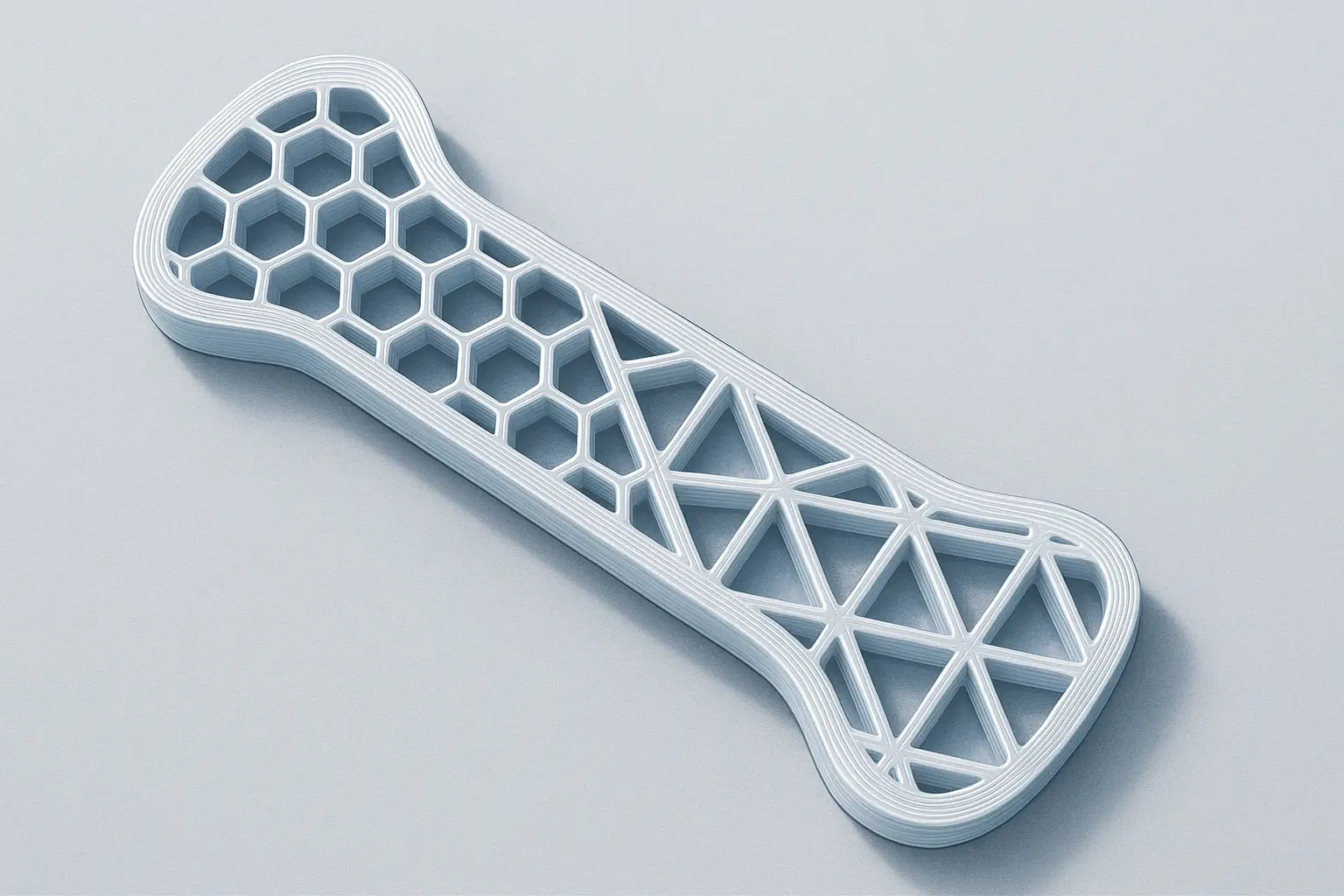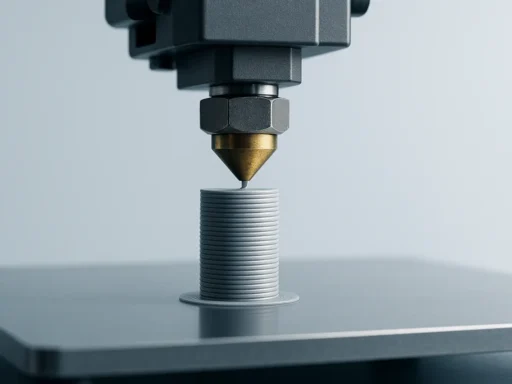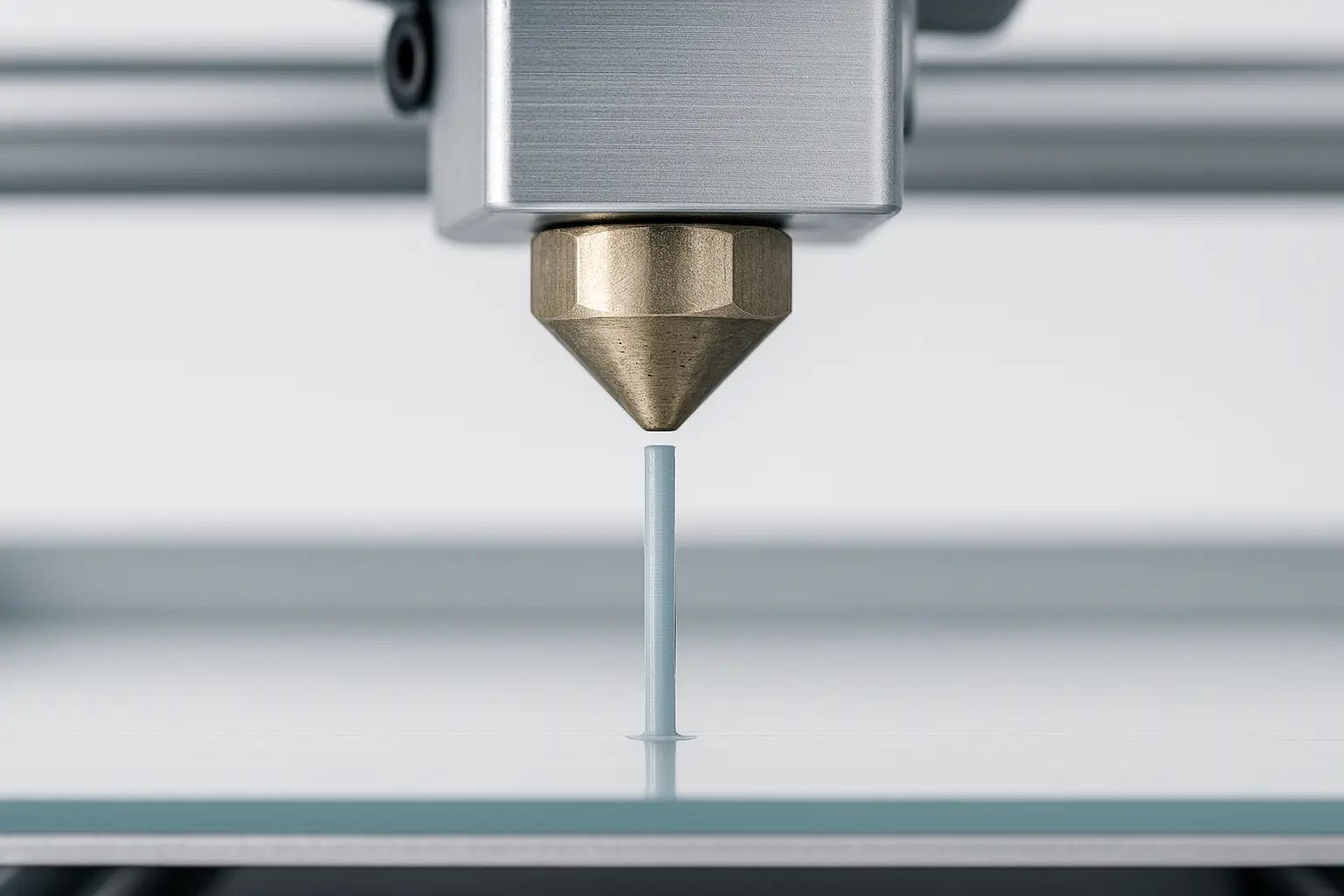Summary
Fused Deposition Modeling (FDM) is an additive manufacturing process that builds 3D objects by extruding melted thermoplastic filament layer by layer. Invented by Scott Crump in 1988 and commercialized by Stratasys, FDM technology is renowned for its simplicity, versatility with various plastics, and democratization of 3D printing. Its significance lies in its global adoption for prototypes, tools, and functional parts across industries. [1][2] 
Historical Background
Fused Deposition Modeling was invented in 1988 by Scott Crump, co-founder of Stratasys, in the United States. Crump’s creation led to the first known 3D printed FDM object—a toy frog—which served as the technology’s prototype. In 1989, Crump filed a patent for the method. The technology’s first commercial system, the 3D Modeler, was launched in 1992. Notably, “Fused Deposition Modeling” is a trademarked term owned by Stratasys, while the RepRap project later coined “Fused Filament Fabrication” (FFF) to describe the same material-extrusion process, but without trademark restriction. [1][2][3][4]
Technical Principles
FDM printing operates via additive manufacturing, specifically material extrusion. In this process, a spool of thermoplastic filament is fed into a heated extrusion nozzle, where it melts. Computer-controlled motors direct the print head using G-code instructions to trace successive cross-sectional slices, depositing heated material onto a platform. As the plastic cools and solidifies, layers are built up, forming a three-dimensional structure. This stepwise process enables the creation of highly customized objects for diverse uses. [4]
Typical FDM systems employ a 0.4 mm diameter nozzle, resulting in a standard layer height of approximately 0.2 mm and a printed line width of about 0.48 mm. In 2020, polylactic acid (PLA) represented 39 % of the FDM filament market, while acrylonitrile butadiene styrene (ABS) held 28 %, reflecting the most widely used materials in this technology. [6][7]
Performance and Variants
The expiration of the original FDM patent in 2009 enabled a dramatic market transformation, with the entry of affordable consumer printers leading to over a 100-fold drop in average unit prices within a few years. This democratized access and spurred widespread adoption of desktop 3D printers. [5]
FDM systems are characterized by their moderate build speeds and resolutions, with the performance depending on parameters such as nozzle diameter, temperature, layer height, and print travel speeds. No reliable, universally agreed-upon quantitative metrics for speed or accuracy exist, as values vary by machine and vendor; future comparative tables could clarify performance if standardized figures become available. 
Applications
FDM technology is extensively used across a wide array of industries and applications. Primary sectors include automotive, aerospace, healthcare (such as medical models and devices), industrial prototyping, education, and the hobbyist market. Its suitability for speedy creation of functional prototypes, tooling, custom models, and low-volume end-use parts underscores its versatility. Diverse uses extend from rapid prototyping in product development to bespoke components in academic and research settings. [1]
Key Application Domains
- Automotive (rapid tooling, prototypes)
- Aerospace (lightweight structural models)
- Medical (anatomical models, assistive devices)
- Industrial design and prototyping
- Education and hobbyist manufacturing
Research Updates
A 2024 research breakthrough introduced LLM‑3D Print, a method utilizing large language models (LLMs) to autonomously monitor and control FDM printing. The system interprets print telemetry and visual cues to detect issues such as warping and immediately executes corrective actions, opening a promising path for fully automated, error-minimized FDM operations. This integration of artificial intelligence could raise the reliability and yield of future FDM workflows. [8]
In 2025, researchers demonstrated a multi‑axis, non‑planar FDM technique to fabricate double‑shell lightweight structures. This process employs coordinated, multi‑directional toolpaths to rapidly build complex, strong, yet material-efficient parts, overcoming traditional planar layer-by-layer limitations of standard FDM. Such innovation points to new frontiers in both design and load-bearing performance. [9] 
Q&A (FAQ)
-
What is fused deposition modeling and how does it differ from FFF?
Fused Deposition Modeling (FDM) is a material extrusion 3D printing technique. “FDM” is a trademarked term by Stratasys, whereas “Fused Filament Fabrication” (FFF) describes the same process but is not trademarked and commonly used in open-source communities. [4] -
Who invented FDM and when was it commercialized?
Scott Crump invented FDM in 1988. The technology was commercialized by Stratasys in 1992, with the first product being the 3D Modeler. [1][3] -
What materials are commonly used in FDM and their typical market shares?
In 2020, PLA (polylactic acid) comprised 39 % and ABS (acrylonitrile butadiene styrene) comprised 28 % of the FDM filament market. [6] -
What layer height and nozzle diameter are standard in FDM systems?
The most common nozzle diameter is 0.4 mm, producing a typical layer height of 0.2 mm and a line width of around 0.48 mm. [7] -
How did the expiration of the FDM patent in 2009 affect the market?
The patent expiration triggered a massive price drop—by roughly two orders of magnitude—leading to widespread availability of affordable 3D printers and rapid growth in desktop FDM adoption. [5] -
What are recent advanced research developments in FDM technology?
Notable advances include LLM-controlled autonomous error-detection and correction in FDM (2024) and multi‑axis non‑planar printing of double‑shell structures for greater efficiency and robust part performance (2025). [8][9]
Sources
- GoEngineer — History of Fused Deposition Modeling
- 3DPrintArea — FDM 3D Printing: Working & History
- Wikipedia — Fused Filament Fabrication
- Encyclopedia MDPI — 3D Printing: FDM Overview
- 3DPrintArea — FDM Patent Expiration and Market Impact
- German Wikipedia — Fused Deposition Modeling: Market Share
- German Wikipedia — FDM Nozzle and Layer Metrics
- arXiv — LLM‑3D Print: Autonomous FDM Error Correction (2024)
- arXiv — Multi‑Axis Double‑Shell FDM Printing (2025)






